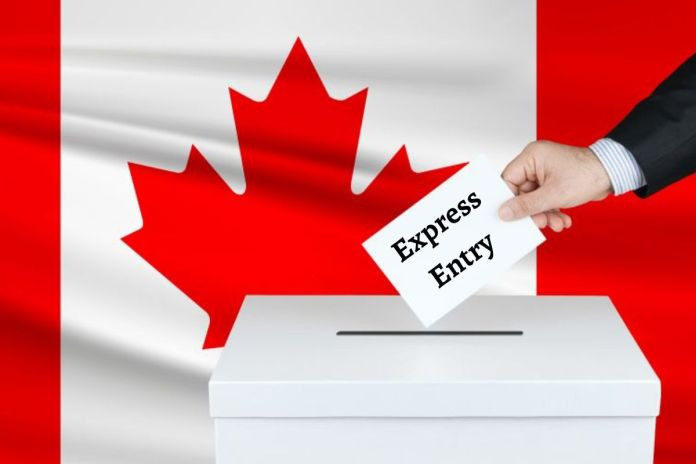On September 15, 2025, Immigration, Refugees and Citizenship Canada (IRCC) announced the latest Express Entry draw, a targeted round that issued 228 Invitations to Apply (ITAs) for permanent residency. This draw was restricted to candidates with active Provincial Nominee Program (PNP) nominations, reflecting Canada’s strategy of aligning skilled immigration with regional labor needs.
The Comprehensive Ranking System (CRS) cutoff was set at 746 points, meaning that only candidates with provincial nominations and strong baseline scores received invitations. The tie-breaking rule was applied from March 31, 2025, ensuring fairness for candidates with equal CRS scores.
Unpacking the Latest Express Entry Draw Details
The latest Express Entry draw focused exclusively on PNP candidates. Unlike broader Federal Skilled Worker or Canadian Experience Class draws, this round prioritized provincial nominations. Candidates who received invitations can now move to the next step: submitting their full application for permanent residency within 60 days.
This selection process underscores two important aspects:
-
Precision targeting: The draw ensures provinces attract skilled professionals who meet specific local demands.
-
Higher thresholds: Even with the 600-point boost from a nomination, candidates still needed at least a 146 baseline CRS score to cross the 746 mark.
CRS Score Distribution in the Pool
IRCC publishes pool distribution data before each draw, giving a snapshot of candidate competitiveness. Below is the breakdown as of September 14, 2025:
| CRS Score Range | Number of Candidates |
|---|---|
| 601–1200 | 220 |
| 501–600 | 24,870 |
| 451–500 | 71,427 |
| 491–500 | 12,341 |
| 481–490 | 12,555 |
| 471–480 | 15,569 |
| 461–470 | 16,158 |
| 451–460 | 14,804 |
| 401–450 | 74,178 |
| 441–450 | 14,719 |
| 431–440 | 16,312 |
| 421–430 | 14,822 |
| 411–420 | 14,714 |
| 401–410 | 13,611 |
| 351–400 | 52,883 |
| 301–350 | 19,978 |
| 0–300 | 8,074 |
| Total | 251,630 |
This table shows that most candidates fall within the 401–500 range, far below the 746 threshold of this draw. For those without provincial nominations, securing an invitation remains highly competitive.
Why the Provincial Nominee Program Matters
The Provincial Nominee Program is central to Canada’s immigration strategy because it balances national priorities with local labor needs. Provinces and territories face different demographic and economic challenges. Some require healthcare professionals, while others prioritize workers in technology, agriculture, or skilled trades.
The program’s impact on Express Entry is significant. A nomination provides 600 additional CRS points, which almost guarantees an Invitation to Apply (ITA) in subsequent draws. This benefit transforms candidates with mid-level CRS scores into strong contenders, leveling the field for applicants who may not otherwise compete at the national level.
Trends in Express Entry and PNP Draws
IRCC continues to adjust its draw strategy to reflect evolving labor shortages and demographic shifts. Recent months show a deliberate pattern: alternating between PNP-specific rounds, Canadian Experience Class draws, and category-based selections that target specific occupations.
Category-based rounds have become more prominent, often focusing on:
-
STEM occupations to support Canada’s innovation and technology sectors.
-
Healthcare professionals, addressing shortages in hospitals, clinics, and elder care.
-
Skilled trade workers required to meet infrastructure and housing needs.
-
French-speaking candidates, ensuring bilingual growth outside Quebec.
These targeted rounds are designed to be responsive. By adjusting the type of draw, IRCC ensures that immigration policy remains aligned with both federal goals and provincial labor market realities.
The latest Express Entry draw illustrates this approach by giving priority to PNP nominees. This signals that future rounds will continue to blend broad-based invitations with more specialized categories. It also shows that IRCC is committed to supporting regional economies and building an immigration system that matches talent with opportunity across the country.
What This Means for Applicants
For candidates in the pool, this draw sends a clear message: a provincial nomination can be decisive. Without one, even strong candidates with CRS scores in the high 400s remain at risk of waiting indefinitely.
Here are steps applicants can take:
-
Research provincial streams: Each province publishes eligibility requirements on its immigration website.
-
Align with demand occupations: Look for sectors currently prioritized, such as healthcare and tech.
-
Stay updated on IRCC announcements: Draw patterns shift quickly, making regular monitoring essential.
-
Work with licensed professionals: Immigration lawyers and consultants can help navigate provincial rules.
Canada’s Immigration Targets and the Role of Express Entry
Canada’s Immigration Levels Plan for 2025–2027 outlines one of the most ambitious strategies in recent years. The government has set a goal of admitting more than 395,000 newcomers each year, with an emphasis on long-term economic growth and workforce development. A significant share of these admissions is expected to come through the Express Entry system, which serves as the backbone of Canada’s skilled immigration process.
The latest Express Entry draw underscores how the Provincial Nominee Program (PNP) supports these objectives. By giving provinces the authority to nominate candidates who meet their unique labor needs, Canada ensures that the benefits of immigration extend beyond major urban centers. This decentralization allows regions with smaller populations to attract skilled workers, balance demographic challenges, and strengthen local economies.
Express Entry, therefore, is not only a pathway for individual applicants but also a tool for the federal and provincial governments to meet labor market demands in a strategic and sustainable way.
Why CRS Cutoffs Remain High
CRS cutoffs remain high across PNP draws because of how the system allocates points. A provincial nomination adds 600 points to a candidate’s existing score, which places nominees far ahead of others in the pool. This mechanism ensures that provinces can directly influence who receives invitations, but it also means that the cutoff levels are consistently elevated.
For many candidates, this reality highlights the importance of pursuing a nomination rather than relying solely on competitive base CRS scores. Even strong academic credentials, professional experience, and language results may not be enough without provincial support. The structure of the Comprehensive Ranking System is designed to prioritize nominees, and this design explains why cutoffs rarely dip below the mid-700s.
Understanding this scoring framework allows candidates to make informed decisions about where to focus their efforts. Those who plan strategically for provincial nomination stand a far better chance of success than those who wait for general draws with lower cutoffs.
Preparing for Future Draws
As IRCC continues to conduct draws on a regular basis, applicants must remain proactive. Waiting until an invitation arrives often leads to missed opportunities. The best approach is to maintain a profile that is accurate, up to date, and aligned with the latest immigration trends.
Candidates should consistently update their profiles with new achievements, such as additional work experience, academic credentials, or improved language test results. This ensures that their CRS score reflects their most competitive standing. Beyond that, pursuing a provincial nomination remains one of the most effective ways to secure an invitation. Each province has its own streams and priorities, and staying informed about these criteria is critical.
Equally important is preparing documentation ahead of time. Gathering educational records, proof of work history, and language results before an ITA is issued reduces the risk of delays. Applicants who are well organized are in a stronger position to submit their applications within the required 60-day period after receiving an invitation.
The Bigger Picture: Why Timing Matters
Immigration continues to serve as a key driver of Canada’s long-term economic and social stability. With aging demographics and growing demands in sectors like healthcare, infrastructure, and technology, the country depends on a steady flow of skilled workers to sustain growth. Express Entry is central to this plan, and each draw represents an opportunity for candidates to secure their place in Canada’s future.
The latest Express Entry draw demonstrates that opportunities exist, but they do not last indefinitely. Candidates who delay updates, postpone preparation, or ignore provincial nomination streams risk falling behind in a competitive system. Timing is critical, not only for receiving an invitation but also for meeting deadlines and positioning oneself for success in subsequent draws.
The broader lesson is clear: those who act decisively now will be best positioned to take advantage of Canada’s ambitious immigration targets. Careful planning, timely action, and professional guidance can make the difference between waiting in the pool and beginning a new life in Canada.
Secure Your Path with Maple Crest Immigration Law
The latest Express Entry draw confirms the central role of provincial nominations in Canada’s immigration system. By issuing 228 invitations with a CRS cutoff of 746, IRCC continues to highlight the value of aligning skilled workers with regional labor needs.
For applicants, the message is clear: securing a provincial nomination can dramatically improve the chances of receiving an invitation. With immigration targets set at historic levels, timely preparation and professional guidance will determine who succeeds in upcoming draws. Now is the moment for candidates to update their profiles, pursue provincial opportunities, and take informed steps toward Canadian permanent residency.
Your Canadian journey deserves expert guidance. Contact Maple Crest Immigration Law today to maximize your chances in the next round of invitations.




